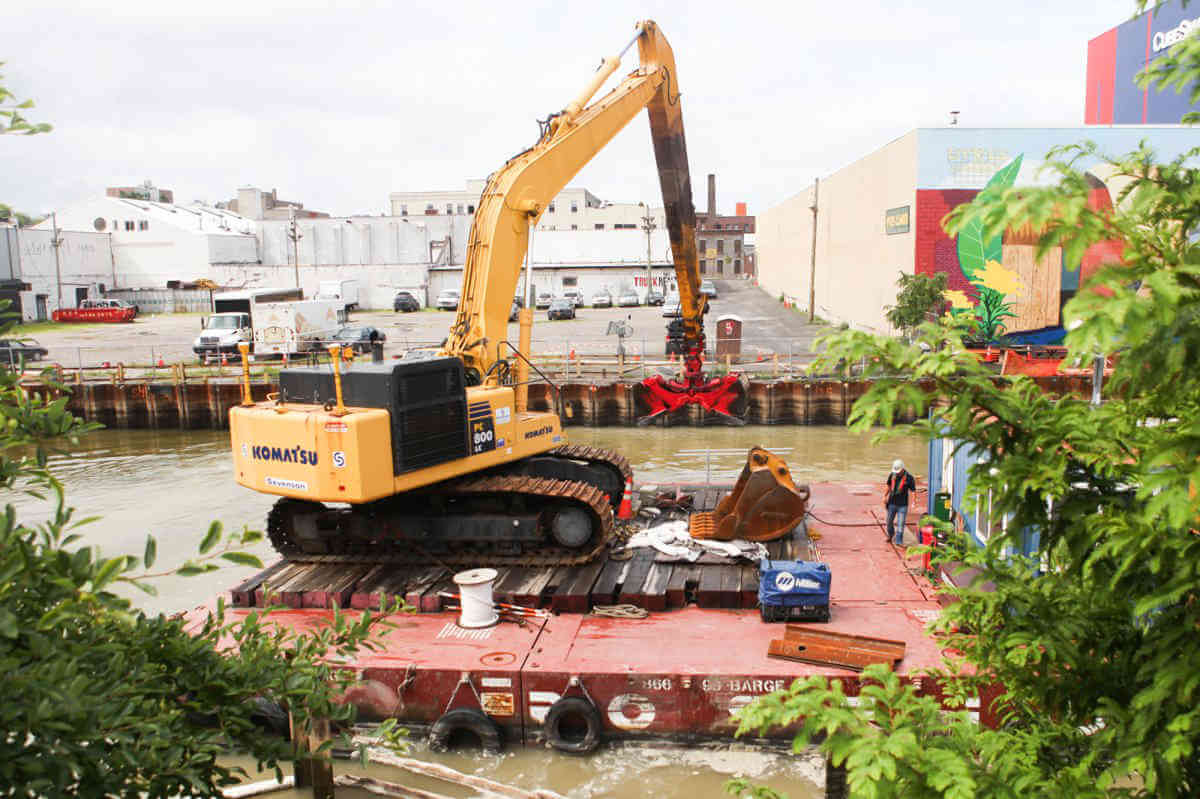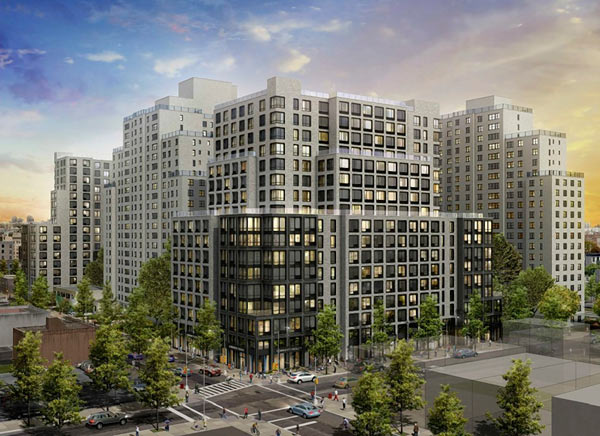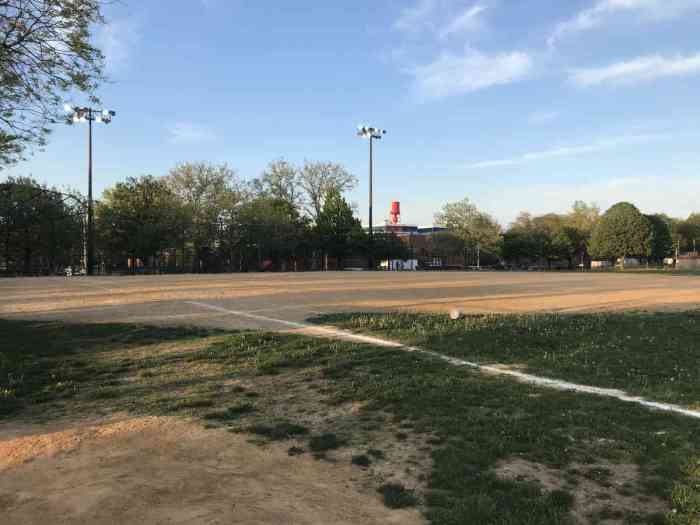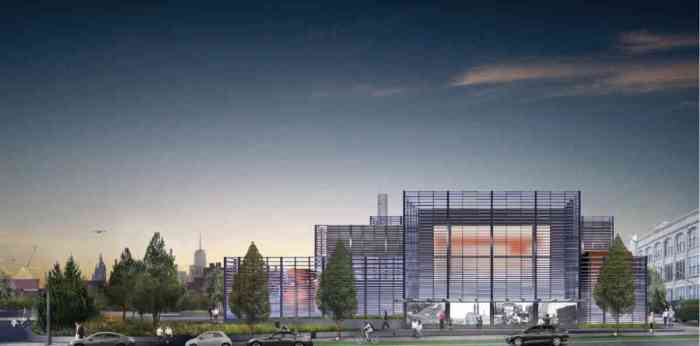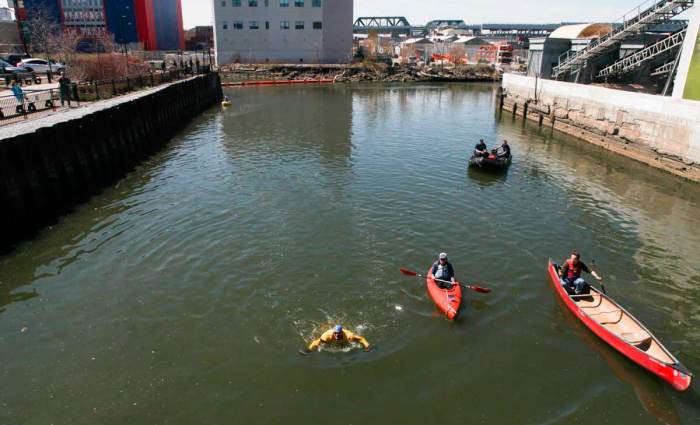Barge-mounted excavators will start dredging the Gowanus Canal in mid-November, scooping out more than a century’s worth of contaminated sediment from the channel bed, the federal cleanup’s project manager said at a Tuesday meeting with local watchdogs of the project.
“We are on schedule for mid-November start of dredging,” said the Environmental Protection Agency’s Christos Tsiamis at the Sept. 22 Gowanus Canal Advisory Group meeting. “We have made a lot of progress — we’re getting ready.”
As part of the Superfund program, Uncle Sam is working with six parties the feds previously identified as primarily responsible for historically polluting the fetid waterway — National Grid, Con Edison, the Hess Corporation, Honeywell International, the Brooklyn Improvement Company, and the City of New York — which have been gearing up for the first portion of the canal’s cleanse.
The scrub was initially supposed to launch in September but got pushed back a month-and-a-half due to the pandemic, according to an EPA spokesman.
“The impacts of the COVID-19 pandemic have caused unscheduled and unavoidable delays in the cleanup process,” said Stephen McBay. “Nevertheless, EPA is working with all stakeholders to move forward as quickly and safely as possible.”
The parties have been assembling their barges and hydraulic excavators off the coast of Staten Island to get them ready for deployment to Brooklyn’s Nautical Purgatory, while also setting up a transfer point at the Public Place site at Smith and Fifth streets, where the smaller local boats will move the muck to larger vessels to ship it out to New Jersey.
The federally-supervised cleanup is split into three phases — dubbed Remediation Target Areas, or RTAs — starting with the scrub of the upper third from the canal head at Butler Street to the Third Street Bridge, which EPA anticipates lasting until July 2023 and costing $125 million.
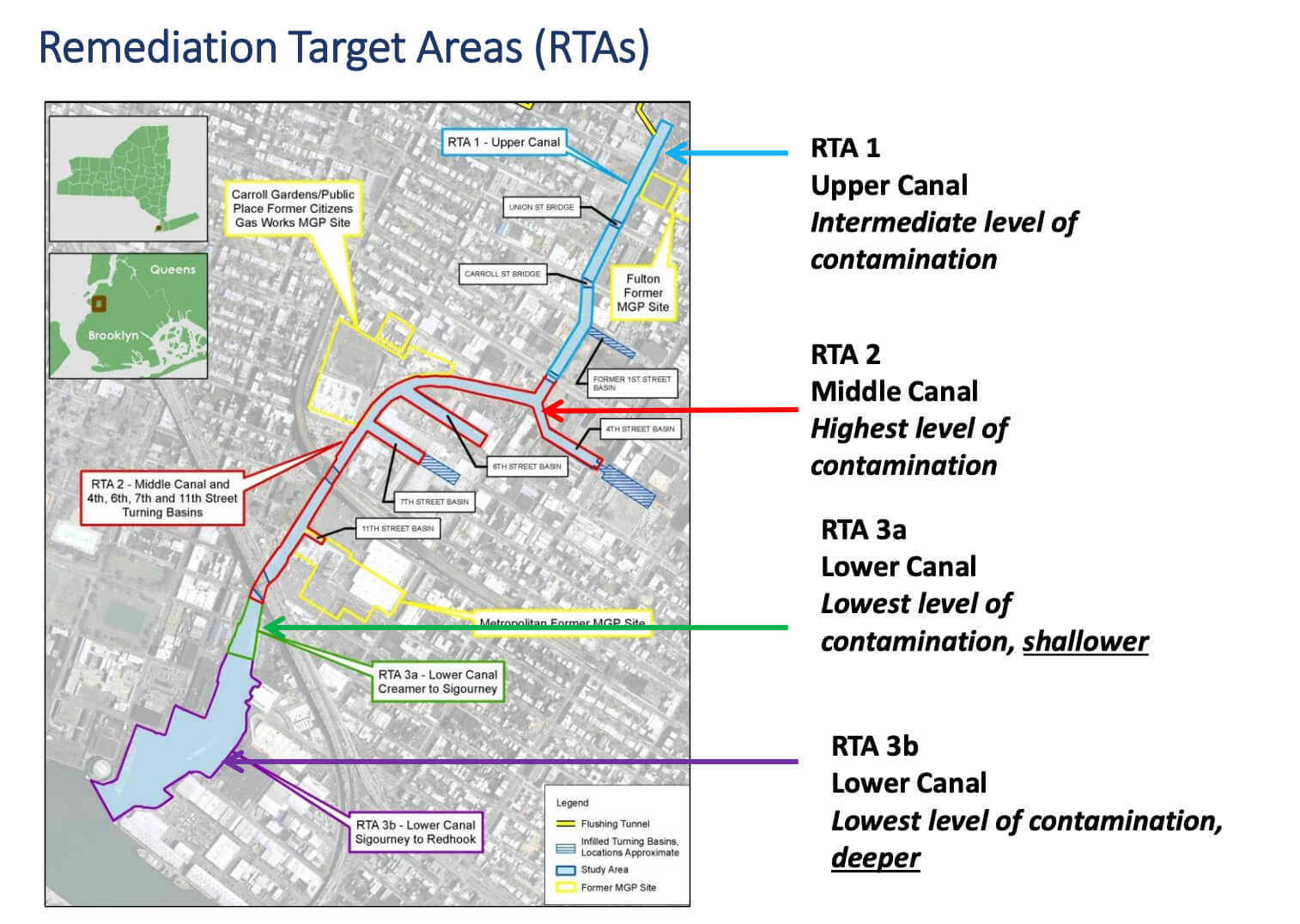
The cleanup group and private developers along the Gowanus have been installing bulkheads at the water’s edge to prevent erosion.
Then, they will start dredging the heavily-contaminated soft sediment, known locally as “black mayonnaise,” that has built up on the bed of the waterway from more than a century of industrial use and hundreds of millions of gallons of combined sewer and storm runoff flushing into the Gowanus annually.
Over the years, inspectors have found the channel to contain high amounts of toxic chemicals and heavy metals, such as mercury, lead, and copper, along with traces of dog poop and even gonorrhea.
Cleaners will then inject cement into the native sediment below to stabilize it, before dredging the remaining dregs of black mayo and installing several layers of sponge-like material and caps to catch any toxins seeping through.
The first phase, known by bureaucrats as RTA 1, also calls for the restoration of a defunct offshoot of the canal, called the First Street Turning Basin, which will be dredged, decontaminated, and revitalized as a wetlands area.
Barges will ship out the gunk from the canal and excavated material from the First Street Turning Basin, necessitating draw bridges around the canal to rise more frequently, causing road delays. The agency will manage traffic in partnership with the city’s Department of Transportation, EPA reps previously told the CAG.
Over the last months, both the Agency and the responsible parties have been preparing for the second phase of the cleanup, or RTA 2, which covers the stretch between Third and Ninth streets.
That is the most heavily-polluted part of the waterway and has a bumpier bed, according to Tsiamis, but the chemical engineer said he and his team will zero in on a design in the coming months.
“There are hills and valleys. So that doesn’t make it easy for our design but we’re prepared to deal with these things,” Tsiamis said.
The environmental honcho said that EPA was pushing the city’s Department of Environmental Protection to keep up to speed with the cleanup, as Big Apple bureaucrats have been delaying progress on the two crucial retention tanks they are supposed to build to keep more gunk from flowing into the canal.
“As we pick up speed in the cleanup side of the canal we are trying to bring New York City in lockstep with the rest of the project,” Tsiamis said.
Update (Friday, Sept. 25, 3:55 pm): This story has been updated to include additional comment from EPA.


